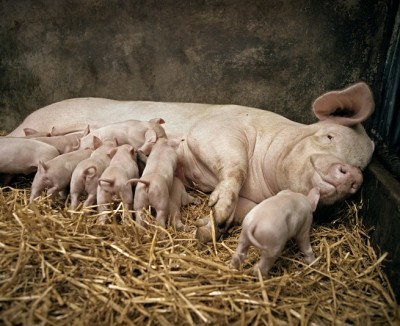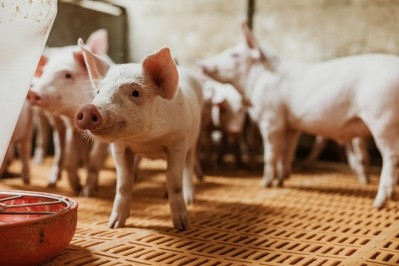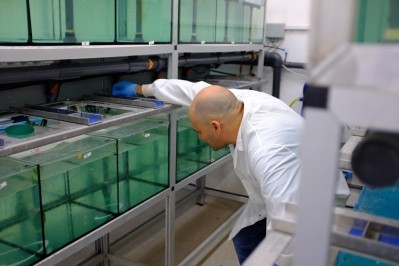UK seaweed firm Ocean Harvest reports strong demand for its blends and growing revenue

Founded in 2005, the seaweed blend producer has operations in Galway, Ireland and the Binh Duong province, Vietnam. Its products are suitable for application in all farmed animal production systems as well as in aquaculture.
With gross margins significantly higher than in 2022 and a strong visibility for H2 seaweed purchase volumes, the UK AIM listed company remains confident about achieving market expectations for 2023.
“What is really driving the growth is the continued increase in acceptance of the products from existing and new customers,” Mark Williams, CEO of OHT, told us on a call.
But there have also been improved margin efficiencies as a result of a reduction in shipping costs following the Covid-19 pandemic.
Impact of IPO
OHT listed on London’s Alternative Investment Market (AIM) in April this year, raising £6m in the process. The IPO has helped boost credibility with industry, and to attract new customers, according to the CEO.
In June, the company announced the results of four feed trials, three of which were conducted by universities in conjunction with commercial entities. A fourth, the swine trial, was undertaken directly by a company.
“Those studies demonstrated efficacy in additional areas, such as with layer hens, and we got some encouraging data out of Asia in relation to aquaculture trials, one in catfish and one in shrimp, as well as a study showing continued success with customers who are trialing it in a well proven area - piglets,” said the CEO.
New customers secured in the past six months include a swine producer in North America, a large feed and premix company in the UK, and an aquaculture player in Asia. “The adoption continues to be diverse across geographies and species.”
“The trial pipeline with research institutes and universities as well as with potential customers continues,” remarked Williams.
And OHT has also continued to expand its supply chain, securing new suppliers in new and existing markets for each of its key seaweed species.
The company has locked in a supply of seaweeds, both red and green species, from new markets in Southeast Asia. “We have also started sourcing [seaweed] from markets in Eastern Africa. Expanding our supply chain [in this way] has given us good visibility in terms of our being able to meet increasing customer demand.
“Brown seaweeds come from the North Atlantic and we have recently secured a deal with a supplier there; we are co-investing in that firm to help it increase capacity, the deal gives us guaranteed off-take of brown seaweed, at a preferential price,” explained Williams.
Trial results
The recently published trial results, said OHT, illustrate how its blends are supporting animal performance and production economics in a cost-effective and environmentally sustainable manner.
A laying hen trial confirmed improvements in both egg production and feed efficiency when birds were fed an OceanFeed Poultry (OFP) seaweed blend supplemented diet. These performance improvements materially increased income per hen, said the UK firm.
A total of 80 hens were randomly divided into two groups, with 40 individually housed hens in each group. The groups were fed one of two diets from 12 to 29 weeks of age: a control diet, or control + OFP.
The data indicated that OFP “significantly improved” egg production percentage and egg weight from weeks 26 to 29 inclusive, and feed conversion ratio - from weeks 25 to 29 inclusive - compared with the control diet.
The improvements in egg production and feed efficiency resulted in increased income per hen of 9% in the birds fed OFP, compared with the control group, with a return on investment in OFP of over 5:1, said the producer.
Catfish and shrimp data
Looking to aquaculture focused studies, and a Pangasius catfish trial demonstrated that fish fed with OceanFeed Aqua (OFA) in their diets had higher feed intake and weight gain, leading to a substantial increase in final weight, revealed the UK firm.
Over a 75-day trial, a total of 640 catfish fingerlings with an average starting weight of 11.6 g/fish were randomly allocated to one of two dietary treatments: a control (standard commercial diet), or control + OFA.
The fish were fed these diets for the duration of the trial period and were weighed at the start and end of the trial. OFA significantly improved feed intake and weight gain in the catfish, resulting in a 14% increase in fish weight at the end of the trial period, said OHT.
The company also reported that in a trial with juvenile shrimp, OFA improved both weight gain and feed efficiency, thus reducing production costs. Furthermore, OFA helped reduce mortality in a disease challenge trial run in parallel, it confirmed.
Piglet gut health
In addition, OHT announced that a commercial swine trial demonstrated material improvements in feed efficiency in post-weaned piglets with OceanFeed Swine (OFS) seaweed blend included in their diet compared with a positive control (including seven conventional gut health additives) and a negative control (all seven gut health additives removed).
A total of 450 piglets were fed one of the three dietary treatments from weaning for a period of 28 days, with OFS added to the negative control. FCR and fecal score were significantly improved by OFS supplementation, leading to a tendency towards lower feed costs per kilogram of gain in the piglets supplemented with OFS, said OHT.
According to Dr Ian Hutchinson, technical director, OHT, the findings indicate that OFS can be used in place of several conventional feed additives to support gut health, improve performance, and increase profitability in post-weaned pigs.











